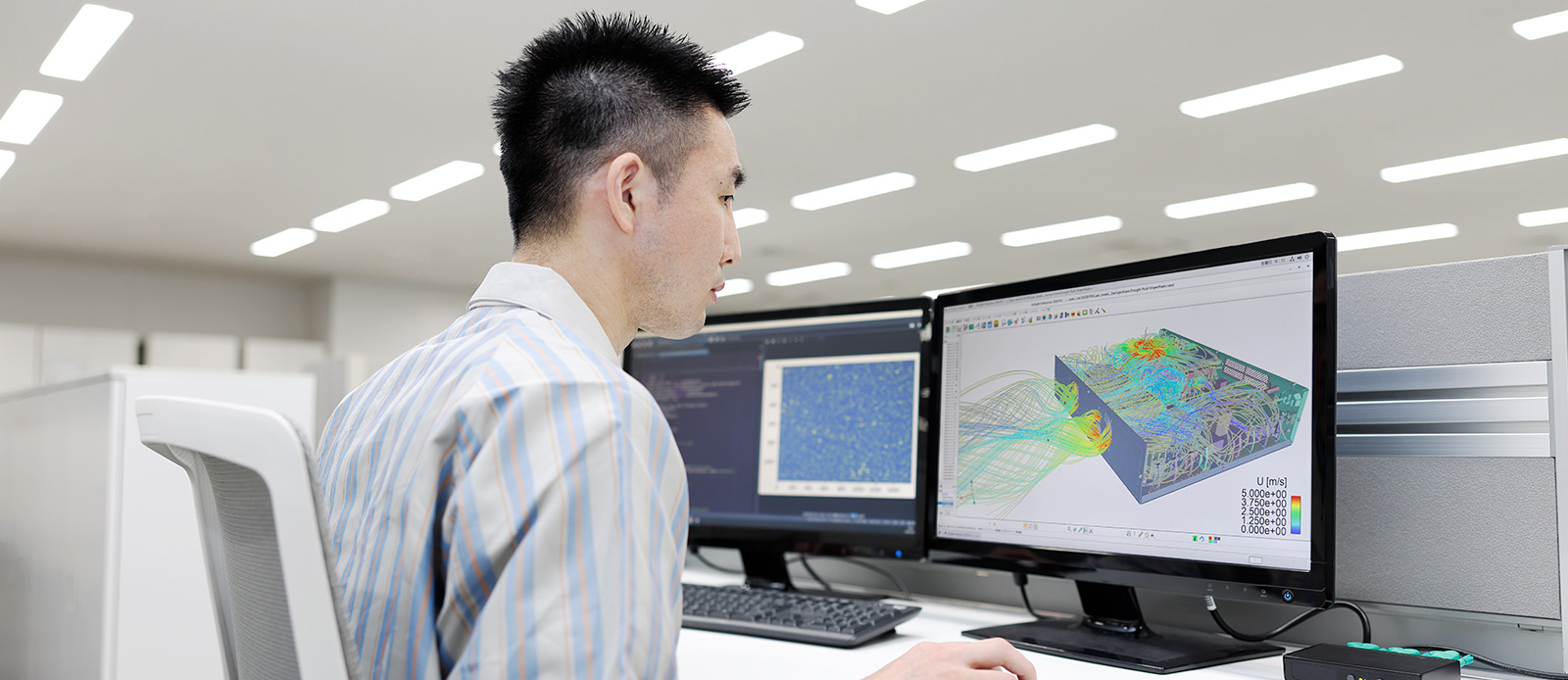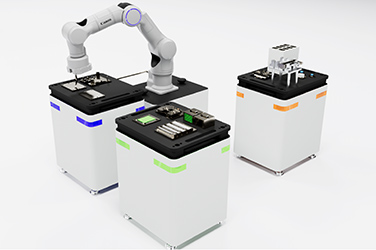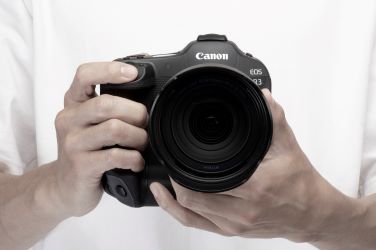

Virtual Prototyping Technology Applied to Various Products
Development and design platform
Virtual prototyping is a simulation technology that runs the prototyping process in a virtual environment inside computers without actually building a prototype. Canon has expanded the scope of virtual prototyping technology to be applied to all of our businesses to improve quality and shorten development lead times.
October 16, 2023
Issues of simulation technology to be addressed
In conventional product development, a number of tangible prototypes were produced based on drawings designed with Computer Aided Design (CAD) to confirm the adequacy of design, discover new issues through repeated experiments, and share images in the development team.
This method placed a burden on product development in terms of cost and duration of prototyping because we had to build many pieces of different prototypes for each stage of development.
Therefore, in recent years, we have come to use virtual models build in computers that act as prototypes to evaluate performance and quality of products under development.
That method, in turn, had issues to be addressed. For simulation in virtual space, product design data created using CAD must be converted to Computer Aided Engineering (CAE) models. This took a lot of time and effort. In addition, general-purpose simulation software did not provide accurate simulations that were optimized for verification of specific product designs.
Pursuit of High-precision Virtual Prototyping Technology
Canon has been developing virtual prototyping technology to check how a product will function and complete the design on a computer, without producing any physical prototypes when possible. Efforts began in earnest at Canon in the early 2000s through a group-wide project to create a virtual prototyping environment. With these efforts, Canon developed a technology for automatic conversion of 3D CAD data into CAE models and original in-house software.
We now have the virtual prototyping technology in place for all of Canon’s products and have built a proprietary development and design platform that enables the design process to be completed finalized in a virtual environment alone. Using virtual prototyping technology that faithfully reproduces the various malfunctions that may occur to a product, it is possible to evaluate the design accuracy and solve problems virtually without creating a physical before producing the product. As a result, we can develop products in a shorter period than before.
In the development of a multifunction device, for example, a simulation model is automatically generated in a computer to simulate movement in the paper feeding unit. In this virtual environment, the paper movement in the feeding unit can be checked in detail without building a physical prototype. Thus, a product of higher quality can be developed in a shorter period of time.
Simulation of Paper Feeding Process inside a Printer
*In order to view videos, it is necessary to consent to the use of cookies by our website. If the videos are not displayed, please click the "Cookie Settings" and accept cookies.
In simulations, publicly available values are often used to specify material properties, but Canon uses actual and analyzed values measured in-house to improve the accuracy of simulations, even going so far as to manufacture the dedicated equipment for that purpose in-house to ensure accuracy in the measurement and analysis of values.
Using this virtual prototyping technology, a variety of tasks are now possible on the computer. It is now possible to verify parts that would have been too small or hidden to see if they had been verified using a physical prototype. In addition, since almost all of the verification which could not be covered by a single physical prototype can now be carried out, the quality can surely be improved.
Virtual Prototyping Technology for Group-wide Use across Businesses
Canon has developed a library of virtual prototyping technologies for a full range of phenomena involved in product development, such as drop impact, vibration, and heat generation. The library is freely available to developers to conduct virtual prototyping, which allows simulations to be performed with high accuracy in the early phases of new product development across a wide range of businesses, allowing us to provide our customers with products of higher quality more quickly, as this environment saves effort and time of development.

Virtual Prototyping technologies applicable to a wide range of products
Heat flow virtual prototyping technologies used for multifunction devices are a good example. The same type of simulation is applied to the development and manufacture of the internal parts of equipment used to produce high-definition displays used in smartphones and TVs. In this way, virtual prototyping technology is being used throughout the company beyond the scope of business.
The Massive Computing Power of a Supercomputer
Virtual prototyping technologies reflect multiple physical laws at the same time, and, therefore, require a huge amount of computation. Canon has been building its own computational infrastructure and has acquired one of the world’s leading supercomputers that has the performance of hundreds of ordinary laptop computers. This actually reduced the development period for some of our products to almost one half. And the system is used for drop simulations, which require massive computation, cutting 50 days of computing to less than a quarter of the time.
Printer drop simulation
Colored part presentation facilitates detailed verification.
*In order to view videos, it is necessary to consent to the use of cookies by our website. If the videos are not displayed, please click the "Cookie Settings" and accept cookies.
Virtual Prototyping Technology Makes a Big Contribution to EQCD
The virtual prototyping technology thus shortens development time and allows Canon to create high-quality products.
It also contributes significantly to achieving carbon neutrality by reducing physical prototypes and enhances Canon’s pursuit of improvements in terms of the environment, quality, cost, and delivery (EQCD).
Canon's virtual prototyping technology allows it to deliver high-quality products to customers in a timely manner leveraging its unique technology and know-how accumulated over many years, while also taking the environment into consideration.




